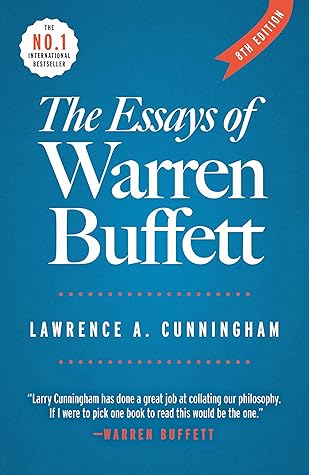More on this book
Community
Kindle Notes & Highlights
Started reading
October 16, 2025
We never had an argument of any sort between the three of us.
It’s difficult to think of
symposium weekend
Robert Redford,
Michel de Montaigne
I know not anywhere a book that seems less written.
His economic goal is long-term—to maximize Berkshire’s per share intrinsic value by owning all or part of a diversified group of businesses that generate cash and above-average returns.
Buffett instructs identifying CEOs who will perform capably regardless of weak structural restraints.
In addition, holding regular meetings without the CEO to review his or her performance can produce a marked improvement in corporate governance.
The CEOs at Berkshire’s operating companies enjoy a unique position in corporate America. They are given a simple set of commands: to run their business as if (1) they are its sole owner, (2) it is the only asset they hold, and (3) they can never sell or merge it for 100 years.
implicit social compact between private enterprise and regulatory overseers.
Buffett emphasizes that performance should be the basis for executive pay decisions.
Executive performance should be measured by profitability, after profits are reduced by a charge for the capital employed in the relevan...
This highlight has been truncated due to consecutive passage length restrictions.
Berkshire’s culture is uniform and enduring and, Buffett says, will help Berkshire prosper long after he leaves the scene.
It rejects a prevalent but mistaken mind-set that equates price with value.
Sometimes he offers prices way higher than value; sometimes he offers prices way lower than value.
A second leading prudential legacy from Graham is his margin-of-safety principle. This principle holds that one should not make an investment in a security unless there is a sufficient basis for believing that the price being paid is substantially lower than the value being delivered.
That difference also shows that the term “value investing” is a redundancy. All true investing must be based on an assessment of the relationship between price and value.
and value, Buffett says, are not distinct.
They are integrally linked since growth must be treated as a component of value.
It is this commitment to stick with what he knows that enables Buffett to avoid the mistakes others repeatedly make, particularly those who feast on the fantasies of fast riches promised by technological fads and new era rhetoric that have recurrently infested speculative markets over the centuries. Finally, Buffet does not
Buffett reminds us that John Maynard Keynes, who was not only a brilliant economist but also an astute investor, believed that an investor should put fairly large sums into two or three businesses he knows something about and whose management is trustworthy.
calling someone who trades actively in the market an investor “is like calling someone who repeatedly engages in one-night stands a romantic.”
calling someone who trades actively in the market an investor “is like calling someone who repeatedly engages in one-night stands a romantic.”


